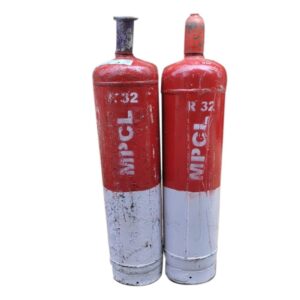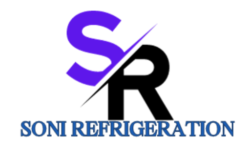What is refrigerator gases?

Refrigerator gases are substances used in various cooling and refrigeration systems to transfer heat and facilitate the cooling process. They cycle through a refrigeration system, changing from a gas to a liquid and back again, absorbing heat from the surroundings and releasing it elsewhere. Refrigerator gases are essential for maintaining low temperatures in refrigerators, air conditioners, heat pumps, and other cooling equipment.
Refrigerator Gases Types and Characteristics
- R-134a (1,1,1,2-Tetrafluoroethane): R-134a is a hydrofluorocarbon (HFC) refrigerant used in many automotive air conditioning systems and some household refrigeration units. It has a low ozone depletion potential but a relatively high global warming potential.
- R-410A (Puron): R-410A is another HFC refrigerant commonly used in residential and commercial air conditioning systems. It has a significantly lower impact on ozone depletion compared to older refrigerants.
- R-22 (Chlorodifluoromethane): R-22 is a hydrochlorofluorocarbon (HCFC) refrigerant that has been widely used in air conditioning and refrigeration systems. However, its production has been phased out due to its harmful impact on the ozone layer, and it is being replaced by more environmentally friendly alternatives.
- R-407C: R-407C is an HFC blend used as a replacement for R-22 in some air conditioning systems. It is considered less harmful to the environment.
- R-404A: R-404A is a widely used HFC refrigerator gases in commercial refrigeration, especially in supermarket display cases and industrial freezers.
- R-290 (Propane): Propane is a hydrocarbon refrigerant with very low global warming potential. It is considered an environmentally friendly option and is used in some household refrigerators and freezers.
- R-600a (Isobutane): Isobutane is another hydrocarbon refrigerant with low global warming potential. It is used in some household refrigeration and cooling appliances.
- Ammonia (NH3): Ammonia is an environmentally friendly refrigerant commonly used in industrial and commercial refrigeration systems, especially in large-scale applications.
- CO2 (Carbon Dioxide): Carbon dioxide is used in some commercial and industrial refrigeration systems, often in transcritical applications. It is known for its low environmental impact.
- R-717 (Ammonia): Ammonia is also sometimes denoted as R-717 when used as a refrigerant.

R-134a – Tetrafluoroethane. Commonly used. This refrigerant is ozone friendly but is a potent greenhouse gas and and such will be phased out in the future. It was introduced as a replacement for R12 which was highly ozone depleting.
R-600a– Iso butane. Commonly used refrigerator gas in modern fridges. Flammable.
There is a trend away from R134A to R600A. This is due to R134A being no longer seen as ‘green’ due to its global warming potential.

